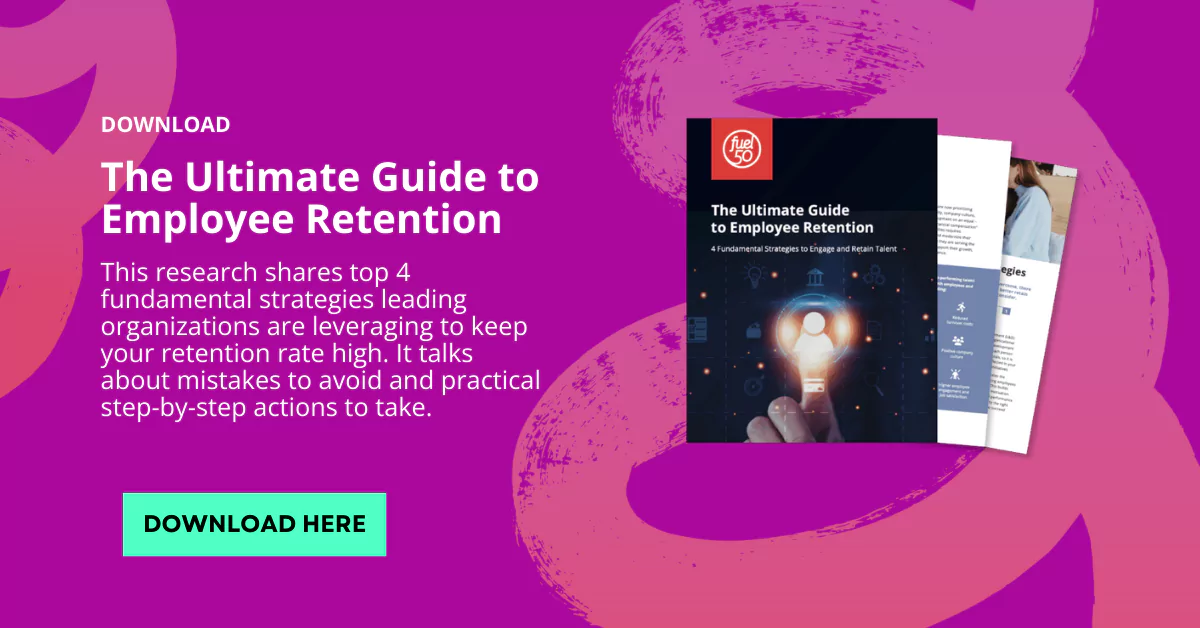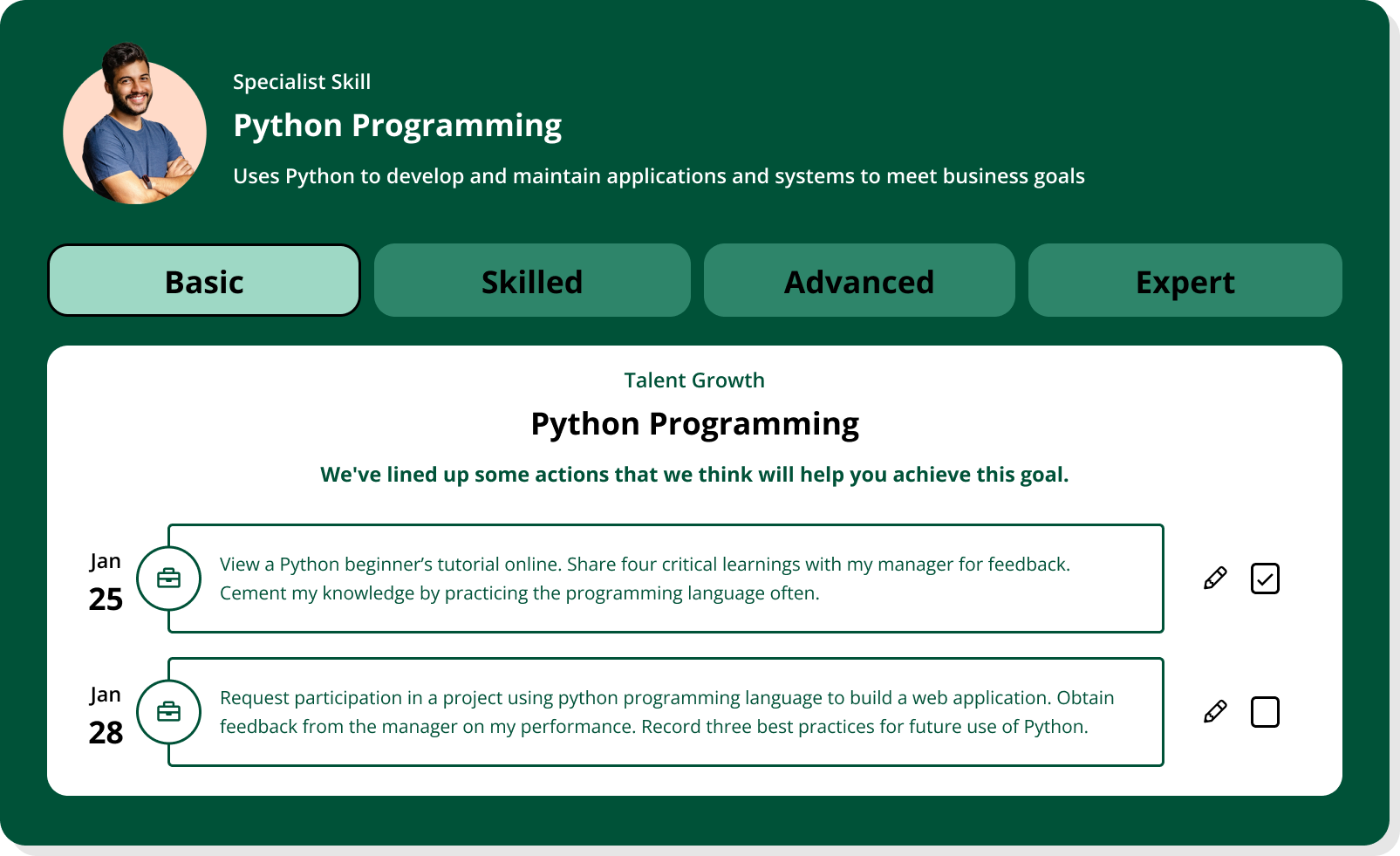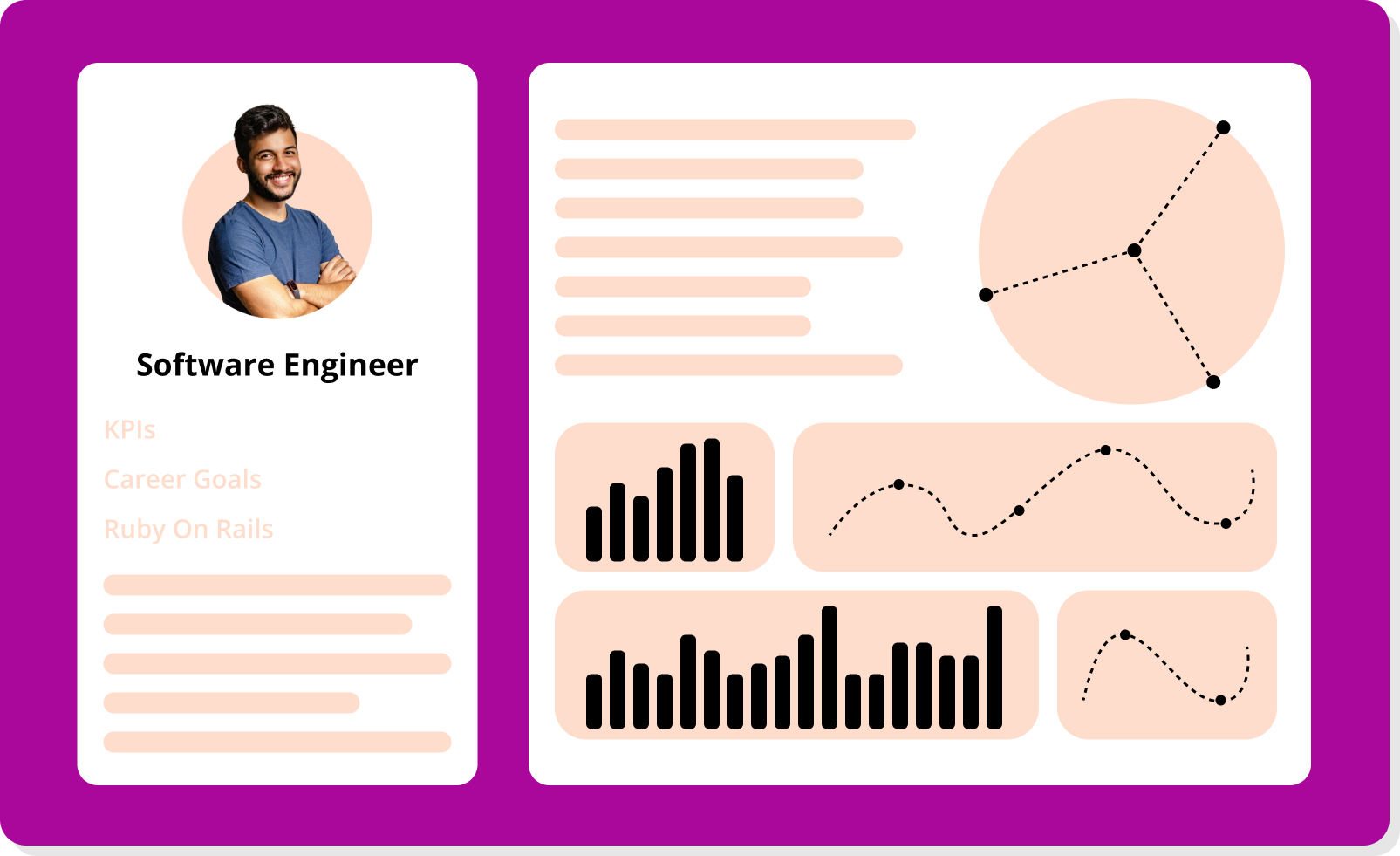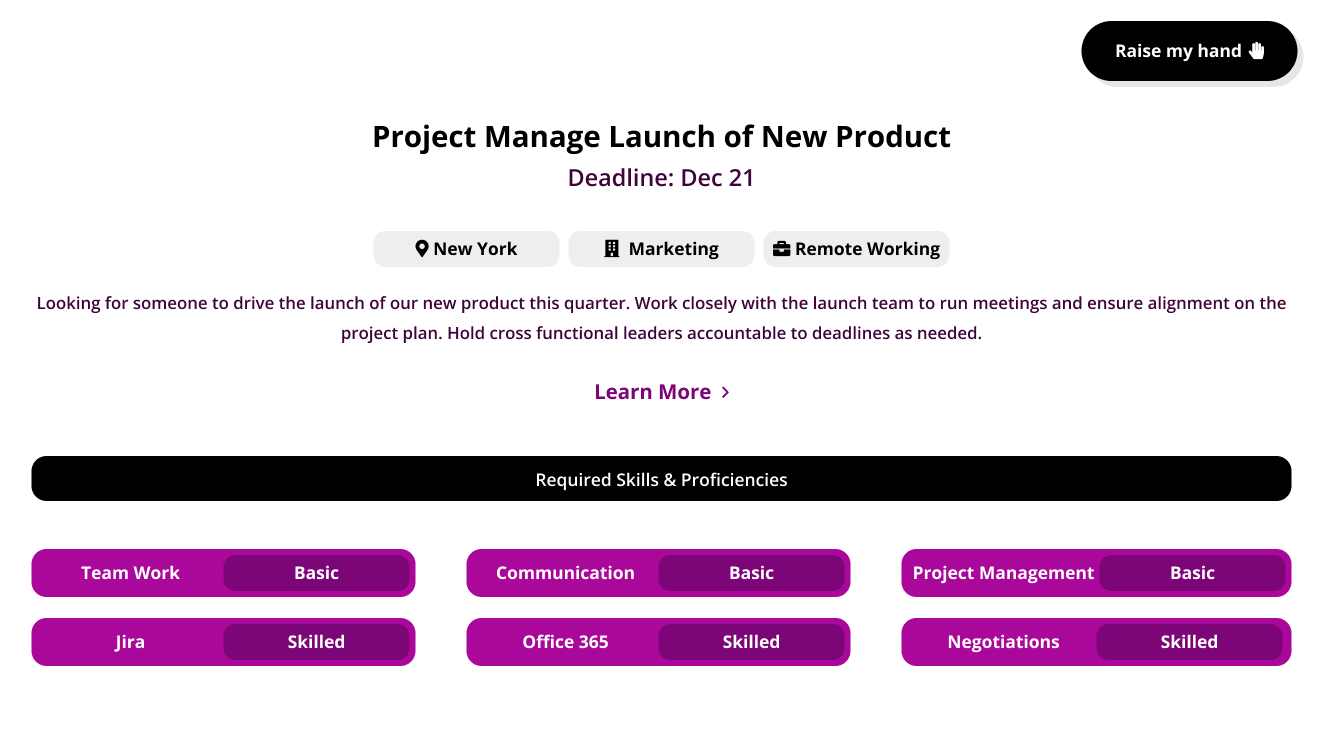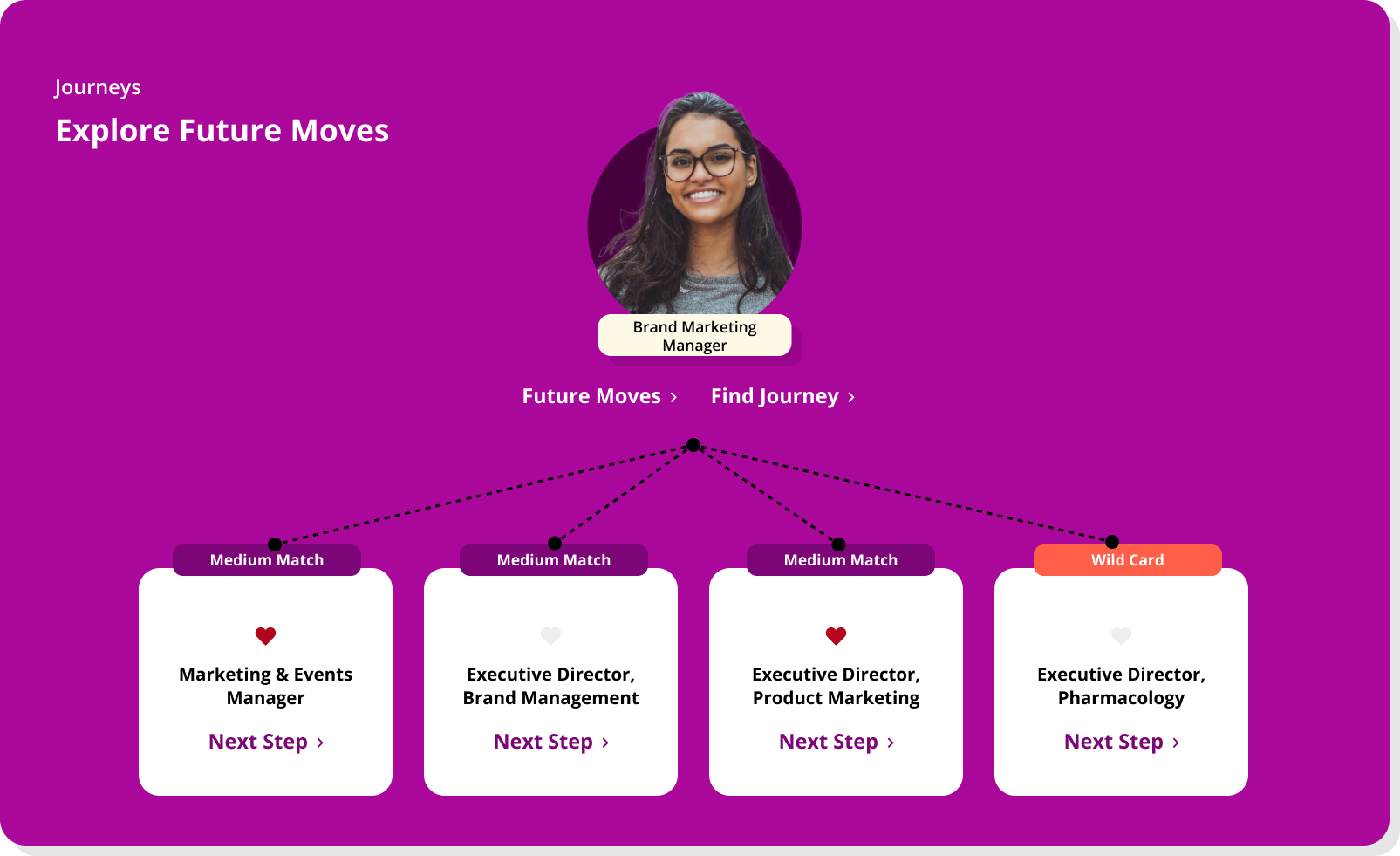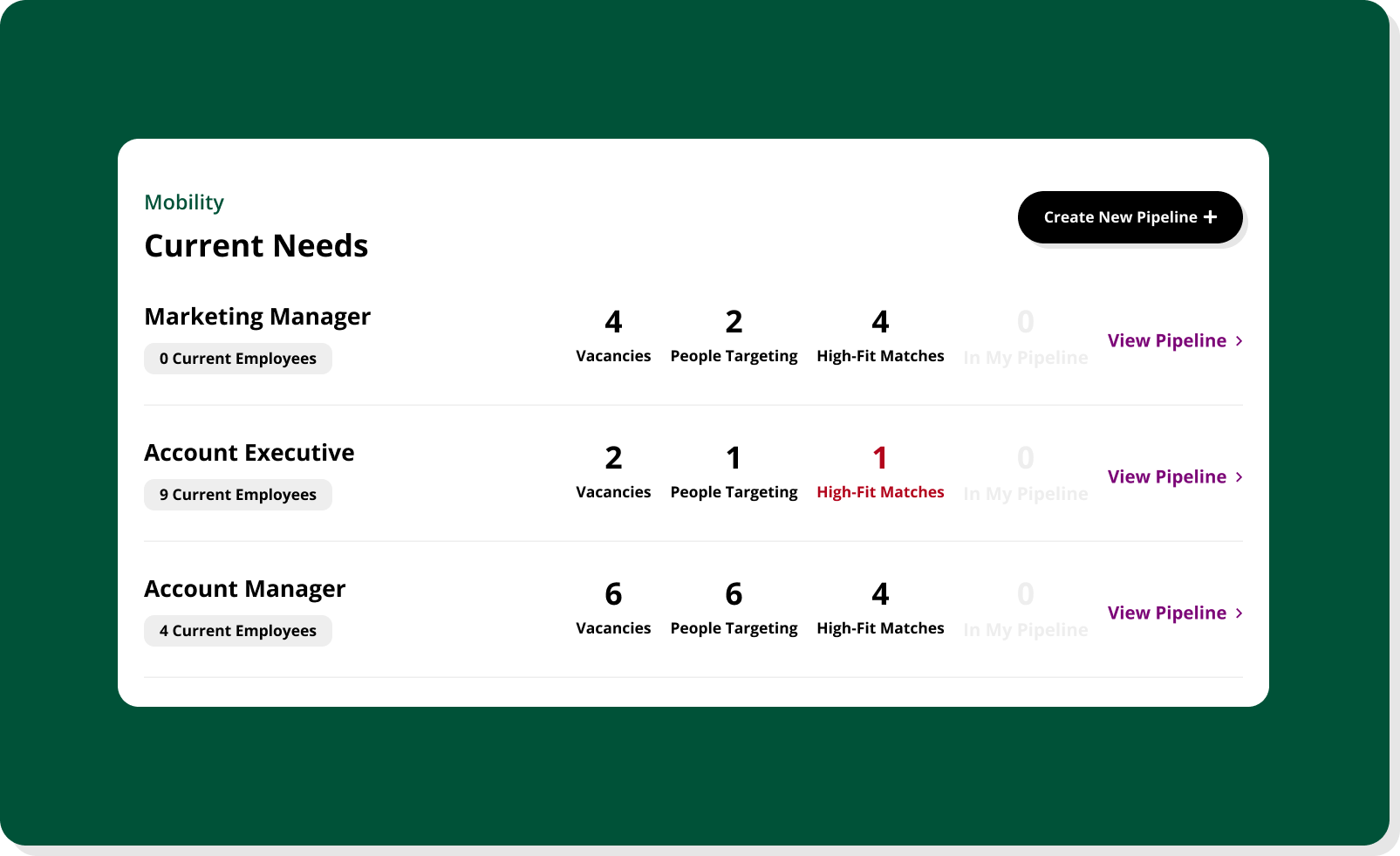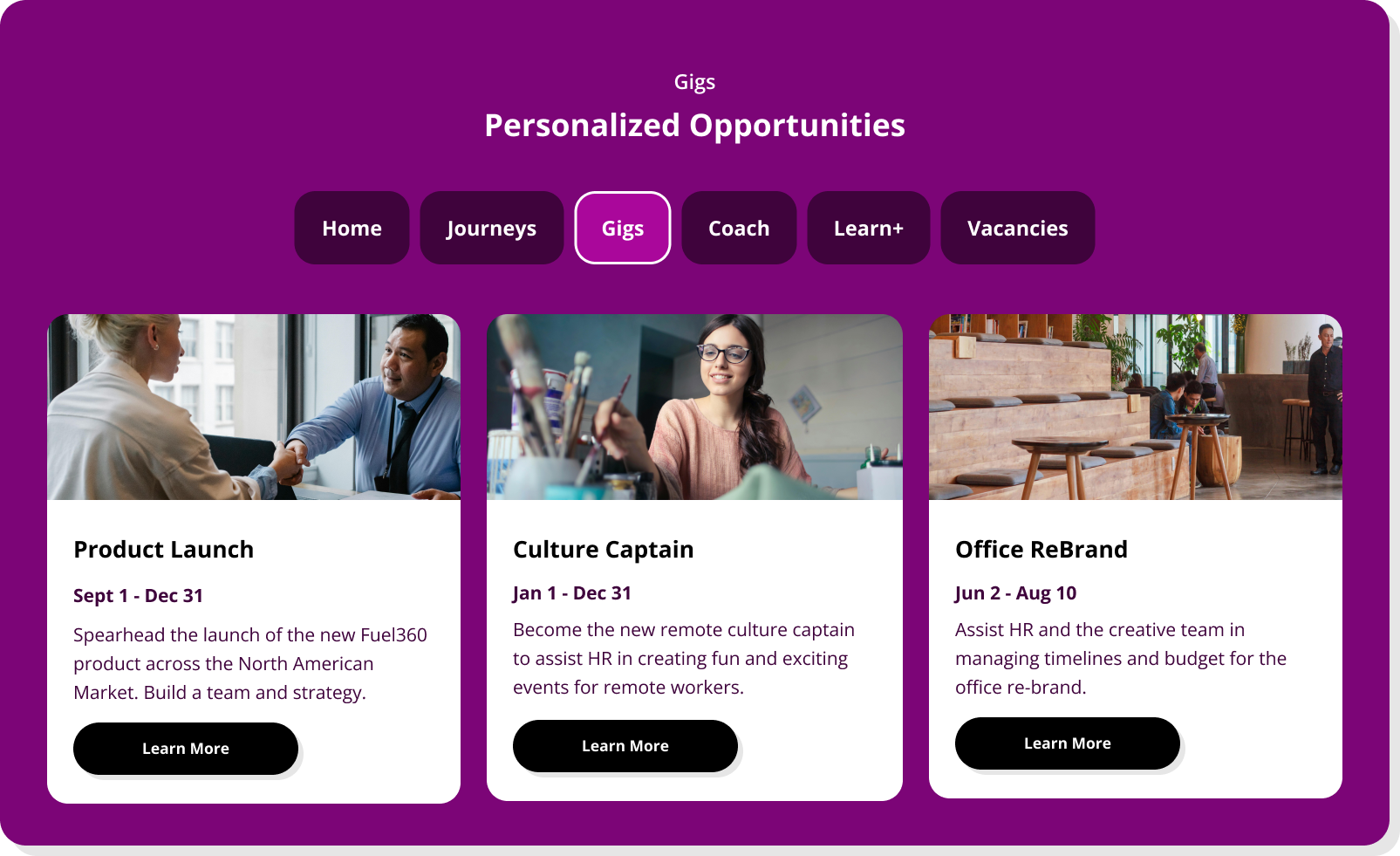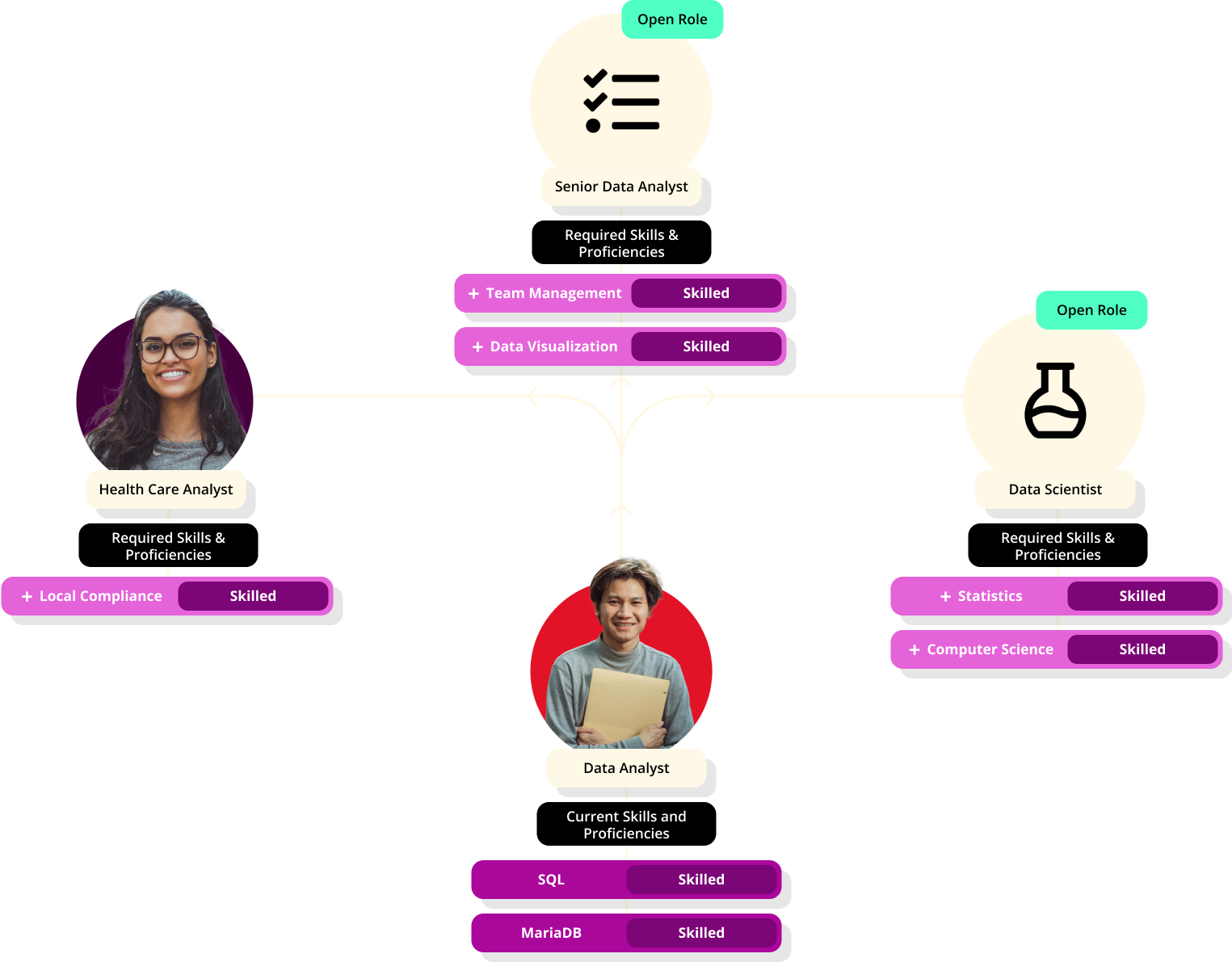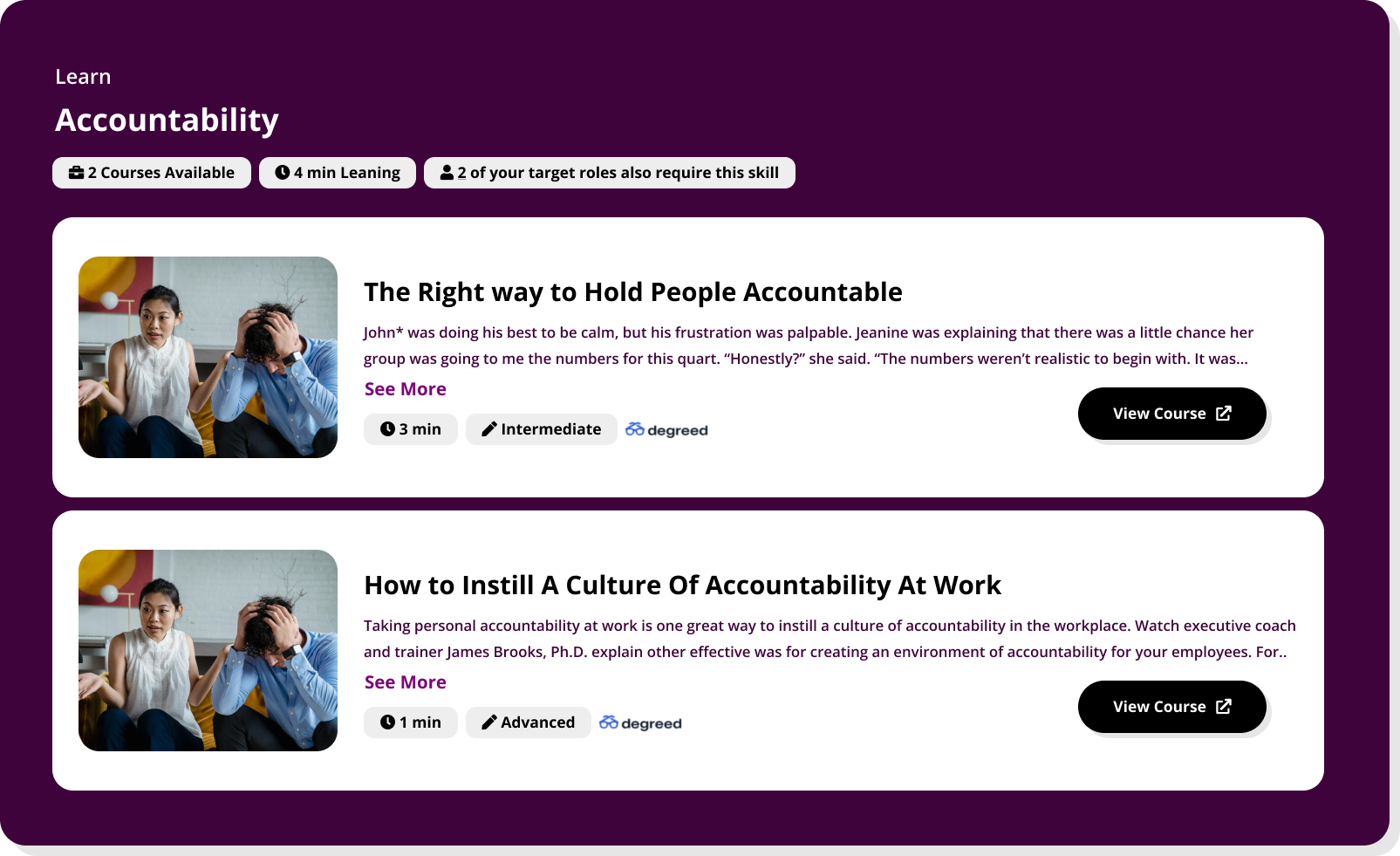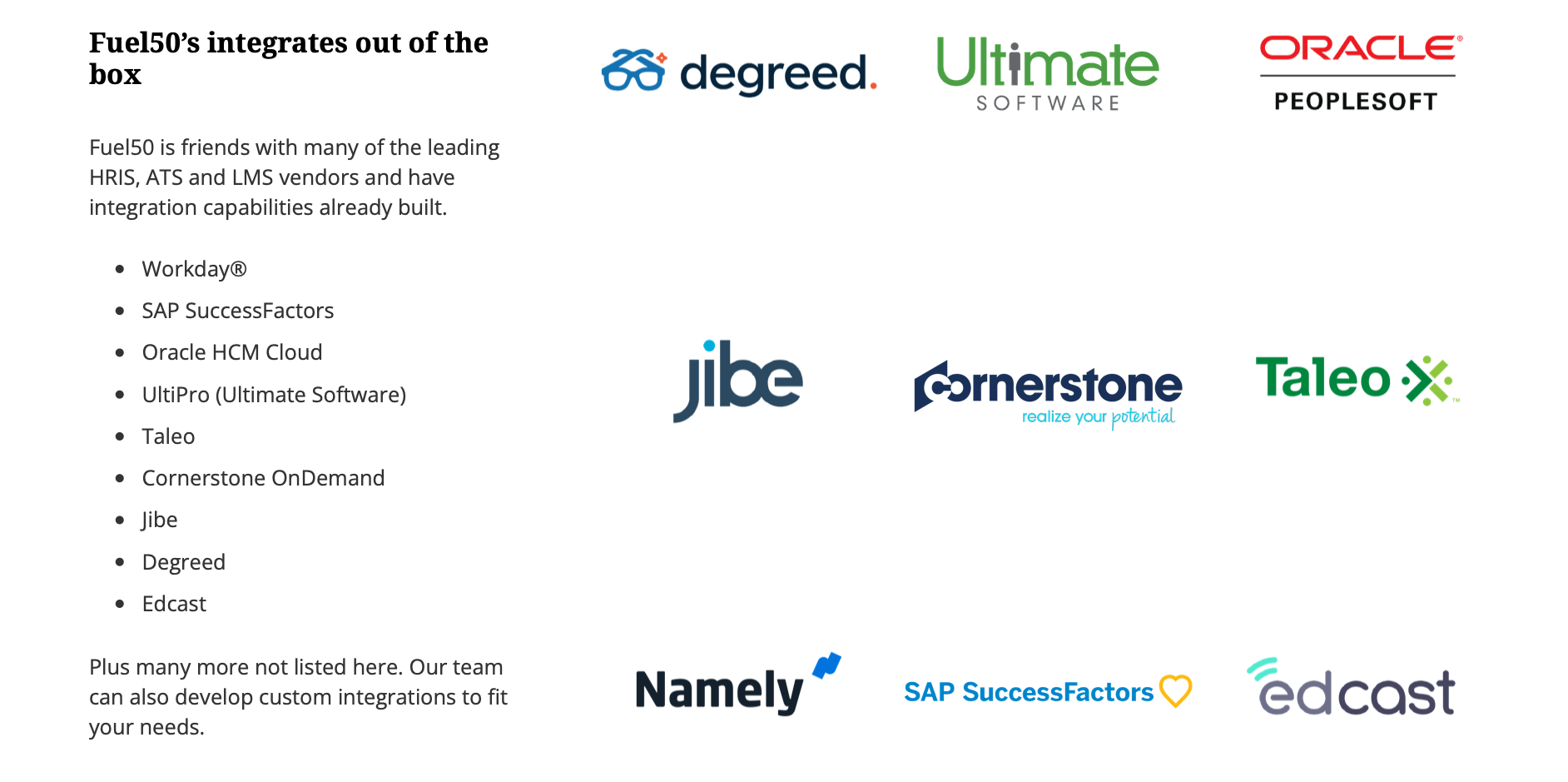When most teams talk about “skills gaps,” they’re almost always pointing to technical ability.
They’ll say things like “We need stronger engineers,” or “Let’s upskill our marketers in analytics.” The assumption is that more hard skills will solve what’s not working.
However, here’s the reality:
- Projects still stall.
- Communication still breaks down.
- High performers still burn out or leave.
The problem is a lack of balance between what people can do and how they work with others to do it.
Technical skills are easy to screen for. They’re testable, certifiable, and look great on paper. That’s why most orgs over-index on them—especially when hiring.
Yet when things go wrong, it’s rarely because someone didn’t know how to run a SQL query. It’s because people didn’t communicate or they didn’t adapt or they couldn’t resolve a conflict without escalating it to a VP.
In this article, we’ll break down the real difference between technical and soft skills—and why overvaluing one at the expense of the other is quietly undermining team performance.
What are technical skills really? (And why they’re overvalued)
Technical skills are specific, teachable abilities you can test, certify, or measure. They’re the “hard” skills that show up on resumes and job descriptions—things like:
- Coding in Python or Java
- Running SQL queries or working in Excel
- Operating machinery or repairing HVAC systems
- Navigating Salesforce, Tableau, or other enterprise tools
They’re tangible, teachable, and they’re easy to assess in an interview or on a performance review. That’s exactly why teams over-prioritize them.
If you’re hiring a software engineer, you can give them a code challenge. If you’re promoting a marketing analyst, you can check their dashboard outputs. It’s clean. It’s trackable. It feels objective.
However, here’s the catch: technical skills have a shelf life.
What got someone hired—say, their fluency in a specific platform or method—can quickly become outdated. Tech stacks evolve, systems get replaced, entire categories of tools become irrelevant.
Worse, companies often double down on technical upskilling when performance lags—assuming a new certification or bootcamp will fix what’s broken. It usually doesn’t. Because the problem isn’t just what people know—it’s how they apply it, communicate it, and collaborate with others while doing it.
And that’s where technical skills start to hit their limits.
What are soft skills? (And why they’re undervalued)
If technical skills are about what people do, soft skills are about how they do it.
They’re the behavioral traits and interpersonal abilities that determine how someone communicates, collaborates, adapts, and solves problems alongside others. Think:
- Clear, respectful communication
- Taking initiative without being asked
- Emotional intelligence—reading the room, staying composed under stress
- Critical thinking and creative problem-solving
They’re harder to define. Harder to measure. And nearly impossible to certify with a badge or bootcamp.
That’s exactly why they’re undervalued. They don’t show up in applicant tracking systems. You can’t plug them into a dashboard. Yet, they’re consistently what separate high performers from average ones.
Study after study links soft skills to:
- Higher team performance
- Lower attrition
- Stronger leadership pipelines
- Faster conflict resolution and decision-making
For instance, in software engineering, high-quality teamwork—built on trust, coordination, and shared norms—explained 81% of variance in team performance as rated by team members.
Here’s the myth that holds most organizations back: “Soft skills are for managers, or HR, or ‘people roles.’”
Not true. Your top engineer needs to communicate clearly in code reviews. Your data analyst needs to present insights that actually drive decisions. Your product team needs to collaborate without stalling or throwing blame.
In other words: soft skills are foundational. And if you’re not actively hiring for them, training them, and rewarding them, you’re leaving real performance gains on the table.
3 key differences between technical skills and soft skills
Here are three distinctions between soft and technical skills.
Measurability
Technical skills are easy to quantify. You can test for them, certify them, and stack-rank them. That makes them appealing—especially when hiring at scale. However, performance is usually driven by how employees show up in real-world situations—how they navigate disagreement, handle feedback, or make decisions under stress. These are observable behaviors, not metrics. And if you’re only optimizing for what’s testable, you’ll miss the qualities that actually make someone effective on a team.
Half-life
The shelf life of technical skills is shrinking. As technologies evolve, methods change, and tools become obsolete, today’s expertise can quickly turn into tomorrow’s liability. Soft skills move in the opposite direction. They gain value over time. The ability to communicate clearly, stay composed under pressure, or think critically in ambiguous situations doesn’t expire—it compounds. In a world where agility matters more than mastery of a single tool, soft skills offer longer-term ROI.
Transferability
Technical skills often lock people into specific roles, functions, or domains. But the people who drive momentum in a business—especially during times of change—are the ones whose skills move fluidly across teams and contexts. Soft skills are inherently portable. They scale from individual contributor roles to leadership, from engineering to marketing, from project work to crisis response. That transferability is what makes them not just valuable, but strategic. They give your organization flexibility in how you deploy talent, structure teams, and respond to change.
Why high-performing teams focus on both (But train for soft skills first)
The best teams don’t choose between technical and soft skills—they cultivate both. Although, the order matters more than most realize.
High-performing organizations know that technical skills unlock potential, but soft skills unlock performance. It’s not enough to have a team of experts if they can’t communicate clearly, give and receive feedback, or align around shared goals.
That’s why some of the world’s most technical teams—engineering orgs, product squads, data science functions—are investing heavily in soft skill development. Communication training, collaborative problem-solving workshops, and conflict resolution sessions are becoming just as common as code reviews or tool certifications.
When soft skills are strong, the entire system runs more efficiently. Meetings are shorter and more productive, feedback loops tighten, trust builds, and silos break. That ripple effect drives better decision-making, faster delivery, and greater resilience under pressure.
So while technical skills may be what gets someone hired, it’s often soft skills that determine how far—and how fast—they’ll go.
Now what? Concrete actions based on your role in the organization
It’s one thing to understand the value of soft skills and technical skills. It’s another to act on that insight in a way that actually improves performance.
Depending on your role, the next step looks different — but the common thread is this: if you’re not intentionally developing both, you’re falling behind.
If you’re a hiring manager
It’s time to move beyond checkbox interviews. Most hiring rubrics heavily favor what’s easiest to evaluate: technical qualifications, certifications, years of experience with specific tools. But technical aptitude is only one part of long-term success.
The real cost of a bad hire usually doesn’t come from a lack of skill — it comes from poor collaboration, misalignment, or an inability to adapt. These issues often reveal themselves months after onboarding, but they were detectable from day one… if you knew what to look for.
Start by building behavioral evaluation into your hiring process. Don’t just ask if someone has worked in a fast-paced team — ask how they gave feedback, navigated disagreement, or responded when plans changed unexpectedly. Look for stories, not just answers. And treat interpersonal maturity as a non-negotiable, not a bonus.
If you’re in L&D or HR
Training budgets tend to mirror business anxiety: when productivity dips, we invest in technical upskilling. However, performance gaps are rarely just technical — and focusing only on skills that are easy to measure gives you a false sense of progress.
Soft skills are harder to quantify, but they’re often the root cause of missed deadlines, low engagement, and team friction. When people don’t speak up, don’t ask for help, or don’t manage conflict well, it doesn’t matter how technically qualified they are — the work slows down.
To create real impact, allocate budget and resources toward communication, collaboration, feedback, emotional intelligence, and resilience. Build these capabilities into every level of your organization — not just for leaders, but across functions and seniority levels. And resist the urge to treat them as one-off workshops. The most effective soft skill development is continuous, reflective, and integrated into daily work.
If you’re an individual contributor
The biggest mistake high-potential employees make is assuming that technical excellence alone will fuel their growth.
In reality, the further you progress, the more your success depends on how well you work with others — not just how good you are at your craft. If you’re a great designer who can’t present ideas clearly, your best concepts may never get implemented. If you’re a sharp analyst who doesn’t listen well in cross-functional meetings, your insights won’t influence decisions.
Don’t wait for your manager to prioritize soft skill development on your behalf. Take ownership. Start with feedback — ask for it regularly, reflect on it honestly, and act on it deliberately. Practice articulating your thought process. Learn to communicate with clarity, not just correctness. These are the skills that make your work visible, not just correct — and that’s what moves careers forward.
How Fuel50 helps organizations balance technical and soft skills
Fuel50 helps organizations build balanced, future-ready workforces by enabling personalized development across both technical and soft skill domains. The platform does this through a dynamic blend of skills intelligence, AI-driven talent mobility, and career enablement tools that consider the full breadth of an employee’s capabilities—not just what’s easily measured.
Here’s how.
AI-powered skills ontology that captures technical and soft skills alike
Fuel50’s platform is built on a proprietary, IO psychologist-backed skills ontology that categorizes and defines thousands of skills across both hard and soft domains. These skills are informed by global research, client feedback, and continuous machine learning to reflect the changing world of work.
- The ontology includes a wide range of technical competencies (e.g. software development, data analytics, financial modeling) as well as interpersonal, behavioral, and leadership capabilities (e.g. communication, emotional intelligence, adaptability).
- Organizations can customize this skills framework to align with their unique business context and strategic needs—whether they want to emphasize digital skills, people leadership, or industry-specific competencies.
- Skills are tagged to jobs, gigs, learning, and career paths—ensuring both soft and technical skills are surfaced and nurtured throughout the employee experience.
Personalized career journeys that support both types of growth
Fuel50 enables every employee to own their career development through a personalized interface that suggests growth opportunities aligned to their current and future skills—whether technical or behavioral.
- Employees complete skills self-assessments to identify where they are today and what they need to grow into desired roles or opportunities.
- The platform then recommends a range of development options—gigs, mentors, learning resources—mapped to both soft and technical skill needs.
- This ensures that employees are not just deepening their functional expertise but also growing in their ability to collaborate, lead, and adapt.
Skills gap analysis that illuminates both functional and behavioral gaps
With Fuel50’s Skills Gap Analytics, organizations can visualize where critical skills gaps are strong or lacking—across individuals, teams, and the enterprise.
- Leaders can drill into gaps not just in technical domains (e.g. cloud computing, regulatory knowledge) but also in people-related areas like communication, innovation, or change management.
- This dual visibility helps talent and L&D teams create more balanced development strategies—addressing both what people can do and how they work.
Internal talent marketplace that surfaces balanced growth opportunities
Fuel50’s Talent Marketplace helps employees discover gigs, projects, mentoring opportunities, and career paths that stretch them across multiple skill domains.
- Opportunities are tagged with required skills—both technical (e.g. SQL, product design) and soft (e.g. collaboration, customer communication).
- Employees can filter and explore growth paths based on their skill goals—choosing assignments that help them round out their capabilities.
- The marketplace promotes horizontal and lateral growth, encouraging employees to apply their skills in new contexts that demand both hard and soft skill development.
Leadership enablement that elevates human-centered capabilities
Fuel50 supports leadership development by embedding soft skill capability-building into its career experience and feedback tools.
- Leaders receive insights on team engagement, development needs, and potential friction points that are often rooted in soft skill gaps.
- The platform promotes empathetic leadership—offering nudges, content, and mentoring that help leaders become better coaches, listeners, and communicators.
- Learning and mentoring suggestions are not limited to executives—any employee seeking growth in leadership-related soft skills can access relevant paths and opportunities.
Horizontal growth that encourages soft skill expansion across roles
Fuel50’s emphasis on horizontal mobility—not just upward promotion—encourages employees to expand their capabilities across functional and interpersonal lines.
- This means someone in a technical role (e.g. a developer or analyst) can explore adjacent paths that require stronger communication, stakeholder management, or customer-facing soft skills.
- The platform supports role adjacencies and career lattices—allowing users to explore moves that develop both technical depth and interpersonal range.
Integration with learning ecosystems that include both hard and soft skills
Fuel50 integrates with learning providers (like Degreed, EdCast, and others) to deliver skills-aligned learning recommendations.
- Learning pathways are tied directly to skills—whether technical (e.g. machine learning, financial analysis) or soft (e.g. conflict resolution, influence).
- Employees receive learning suggestions personalized to their growth goals and career aspirations.


